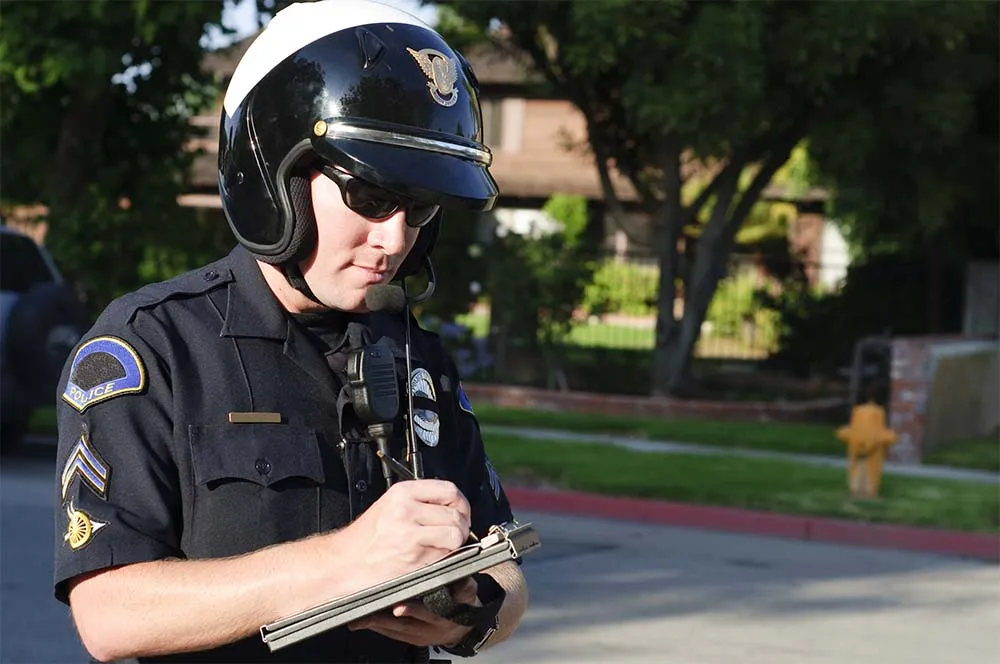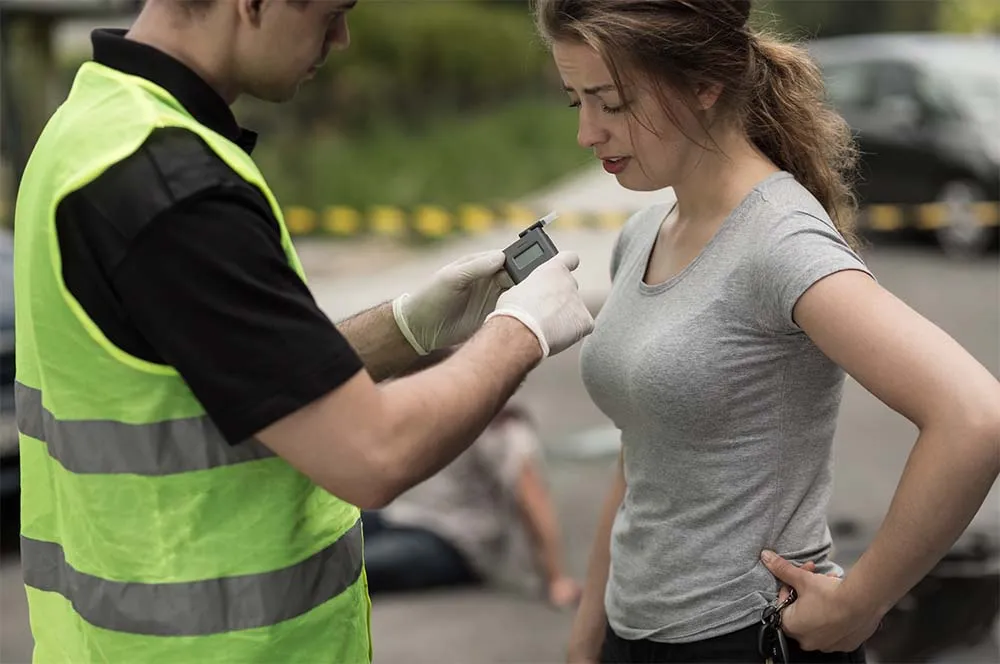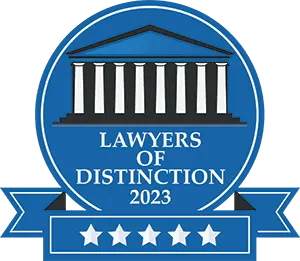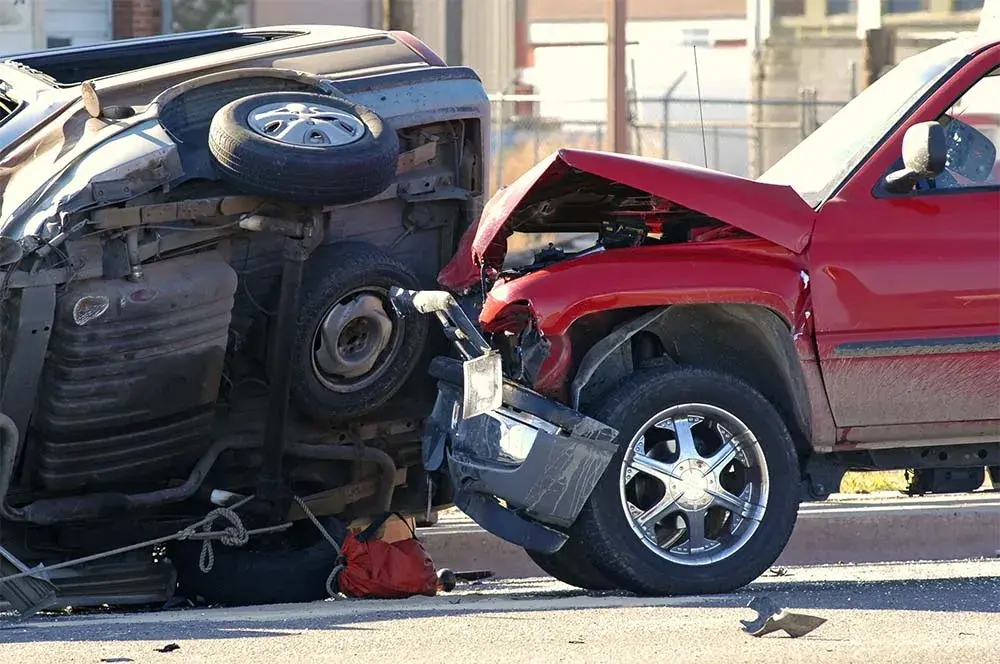
Raleigh DWI Lawyer: Providing Aggressive Criminal Defense for DWI Charges
Facing DWI charges in Raleigh/Wake County or surrounding counties? You don’t have to go through it alone. The Law Office of Christopher R. Detwiler, PLLC provides aggressive defense for DWI cases, fighting for the best possible outcome. Contact us today for a FREE consultation.
DWI CHARGES IN RALEIGH? YOU ARE NOT ALONE.

DWI Law Made Easy
At The Law Office Of Christopher R. Detwiler, we understand that being charged with a DWI can be a nerve-wracking experience. We also know how important it is for you to have experienced and knowledgeable legal representation when facing these kinds of charges. That’s why our Raleigh/Wake County and surrounding counties DWI lawyer is here to help you navigate the entire process from start to finish.
We are committed to providing you with the highest quality legal services while protecting your rights and standing up for justice.
Chris has extensive experience in defending individuals charged with driving while impaired, and he will work tirelessly on your behalf, helping you understand all of your legal options and fighting to get the best possible outcome for your case. He understands that you are trusting him to provide you with strong legal representation, and he takes this responsibility seriously.
Christopher R. Detwiler has the skills, experience, and dedication needed to protect your rights and achieve the best possible outcome. Contact Chris now.
General Consequences of a DWI Conviction in North Carolina
Chris will work hard to maximize your chances of avoiding serious criminal penalties as well as any other repercussions associated with a DWI charge. We will also provide you with the resources and information necessary to understand the steps that need to be taken to protect your rights and address any legal issues associated with a DWI charge. The consequences of a DWI conviction can be severe, and we understand that the emotional toll can be overwhelming. We are here to help you through this difficult time and provide you with the support and guidance you need.
If a defendant is convicted of Driving While Impaired (DWI) in North Carolina, he or she will face a variety of significant consequences.
For a first-time conviction, a defendant can expect the following:
- Legal fees of normally between $2,500 and $5,000 for a privately retained attorney;
- A suspended sentence and unsupervised probation;
- Twenty-four, forty-eight, or seventy-two hours of community service depending on the level of the sentence;
- Court costs, fines, and fees of at least $393, but sometimes significantly more, depending on the circumstances;
- A one-year license suspension, although the defendant generally qualifies for a limited driving privilege for work, school, and household purposes during certain hours and days of the week;
- A substance abuse assessment ($100) and the recommended treatment (minimum of sixteen hours and $160); and
- An automobile insurance increase of up to 340%.
When you add up the financial burden of a first-time DWI conviction, it generally exceeds $10,000, the overwhelming majority of which consists of the legal fees and the increased insurance premiums. For some, the limits on the driving privilege and the collateral consequences to employment and educational opportunities cause more hardship than the financial burden.
Consequences are much more significant if the defendant has the following. In these circumstances (known as grossly aggravating factors), the defendant faces mandatory jail time or inpatient treatment.
- A prior DWI conviction within the last seven years,
- Drove with a license suspended due to a DWI conviction at the time of the charge,
- Caused an accident that resulted in serious injury, or
- Committed the offense while a minor or disabled individual was in the car
At The Law Office of Christopher R. Detwiler, PLLC, we know that every case is unique, and we strive to customize our services to meet each individual’s needs. We will provide you with an in-depth analysis of your case and a comprehensive legal strategy that is tailored to your unique situation. Our team will work diligently to ensure that the best possible outcome is achieved.
Why Choose Law Office of Christopher R. Detwiler as Your Raleigh DWI Guide
At The Law Office of Christopher R. Detwiler, we are committed to providing our clients with the highest quality legal services. We have extensive experience in DWI defense representation and litigation, so you can be sure that your case is in excellent hands. Chris’s commitment to excellence has earned him a strong reputation among law enforcement, prosecutors, and other criminal defense law firms. With his extensive knowledge, he will be able to provide you with a strong DWI defense.
Being charged with a DWI is a frightening experience, and we are here to make it easier for you. Chris will explain all of your options and help you make informed decisions about your case. We strongly believe that everyone deserves a fair and impartial trial. Chris is committed to providing quality legal representation and will be with you every step of the way, from the moment you call until your case is resolved.
At The Law Office of Christopher R. Detwiler, we are not afraid to take your case to trial if it means protecting your rights and ensuring that justice is served. We understand how intimidating the court process can be, especially when faced with a DWI charge. With Chris’s experience, he will provide you with the best possible representation by thoroughly preparing for every stage of the proceedings.
Our Three-Step Plan for Successfully Defending Your DWI Case
At the Law Office of Christopher R. Detwiler, we understand that being charged with a DWI can be a daunting experience. That's why we have developed a three-step plan to successfully defend your DWI case.
Initial Consultation: Discuss Your Case with our Raleigh DWI Lawyers
The initial consultation is the first step in our process. During this meeting, we will discuss your case in detail so that we can better understand the facts of your situation and determine how to best proceed.
Building Your Defense: Investigating Your Case and Building Your Defense Strategy
The second step is to begin building your defense. During this stage, our law firm will thoroughly investigate your case and analyze all the evidence against you in order to develop a comprehensive strategy for defending your rights in court. This step focuses mainly on the discovery review meeting that you have with Chris. After reviewing the reports, videos, and documents in your case, you and Chris will have a much better idea of where you stand on your defenses.
Defending Your Case: Representing You in Court and Achieving the Best Possible Outcome
The third step is to represent you in court. Our legal team will stand by your side and make sure that your rights are protected throughout the entire process. We will use our extensive experience and knowledge of impared driving law to fight for a favorable outcome on your behalf.
Charged with DWI? Get the Strong Defense You Deserve
Schedule a FREE Consultation to Speak Directly with Attorney Detwiler
DWI Criminal Attorney Representation of Drunk Driving Cases
The State of North Carolina uses the term (DWI)-Driving While Impaired. In other states, you may hear terms like (DWI)-Driving While Intoxicated, (DUI)-Driving Under the Influence, or (OWI)-Operating While Intoxicated. In the UK it is known as drink-driving. In either case, it is the crime or offense of driving or operating a motor vehicle while impaired by alcohol or other drugs (including recreational drugs and those prescribed by physicians).
To obtain a conviction, the officer, deputy, or trooper must conduct a thorough investigation and the District Attorney’s Office must present the relevant evidence in a clear and convincing manner that constitutes proof beyond a reasonable doubt. Given the complex nature of DWI cases, there are numerous potential defenses. While Chris will review every possible defense, he has included information on five of the most common DWI defenses.
Common DWI Defenses

Reasonable and Articulable DWI Suspicion
Under the Constitution of the United States, law enforcement cannot stop or seize a vehicle without reasonable and articulable suspicion that the driver or a passenger has committed an infraction. For example, officers will stop people for weaving back and forth, either within their own lane or out of their lane. These stops are often unconstitutional, and if the judge agrees, the District Attorney’s Office will dismiss the case.
As one of the top DWI attorneys in Raleigh, Chris frequently represents people in North Carolina DWI cases where it is not clear whether his client committed a traffic violation. For example, officers will stop people for weaving back and forth, either within their own lane or out of their lane. These stops are often unconstitutional, and if the judge agrees, the District Attorney’s Office will dismiss the case.

Probable Cause to Arrest
The Constitution of the United States prevents law enforcement from making an arrest in a DWI case without probable cause. While the Constitution requires probable cause for each element of the offense, Chris most frequently challenges whether the State has presented the probable cause of impairment. Probable cause to arrest is the most common defense in a DWI case because it is not easy to demonstrate that a person is impaired without an experienced officer conducting a thorough investigation.
Judges, attorneys, and law enforcement focus on three phases when evaluating whether there is probable cause to arrest. The first phase is the vehicle in motion phase. During this phase, we consider what facts relating to the Defendant’s driving suggest that he or she is impaired. For example, we consider evidence such as weaving, stopping or starting suddenly, failing to respond to the officer’s emergency lights, pulling over in an appropriate location, and hitting the curb or another object. Facts such as speeding ten to twenty miles over the speed limit or rolling through a stop sign occur frequently and are subject to a traffic ticket, but do not provide significant evidence of impairment.
We call the second phase the personal contact phase. This portion of the officer’s investigation begins when he or she approaches the vehicle. During this phase, we consider facts such as the odor of alcohol, slurred speech, red and glassy eyes, trouble producing a driver’s license and registration, and difficulty exiting the vehicle.
The third phase consists of field sobriety tests. Although there are a variety of different tests that officers utilize to determine whether a person is impaired, the three standardized tests are Horizontal Gaze Nystagmus (HGN), Walk and Turn, and One Leg Stand. When administering HGN, the officer will look at a person’s eyes while moving a stimulus back and forth. The stimulus is usually either the officer’s finger or a pen. The suspect will follow the stimulus with his or her eyes while the officer looks for an involuntary jerking of the eye known as nystagmus. For the Walk and Turn Test, the officer will ask the driver to take nine heel-to-toe steps on a line, turn, and take another nine steps. Lastly, during the One Leg Stand, the officer will instruct the suspect to stand on one leg and count. These standardized field sobriety tests are the most important factor in determining whether the officer, trooper, or deputy had probable cause to arrest. Effective cross-examination on these tests often makes the difference between a conviction and a dismissal.
Evidence of Driving During DWI Suspicion
While issues like reasonable suspicion to stop and probable cause to arrest involve constitutional violations and take place at pretrial hearings, issues like driving come before the court during the trial. The issue is whether the State has proven that the defendant was driving beyond a reasonable doubt. In most of Chris’s cases, the State will have no problem proving driving because the officer will stop the vehicle while it is in motion and will approach while the Defendant is still behind the wheel.
In many cases, however, the officer, deputy, or trooper will not arrive on the scene until after the vehicle has stopped moving. This issue arises most frequently in cases involving an accident, especially a one-car accident. When the officer shows up and finds a vehicle in a ditch and three people standing outside of the car, the State frequently will not have a clear-cut case for driving. Even if one of the occupants admits to driving, an admission alone is generally not enough to find driving beyond a reasonable doubt. To corroborate the admission, the officer will look for evidence such as who, if anyone, has the keys, to whom the car is registered, and statements of bystanders.

Evidence of Impairment
Like driving, the State must prove the element of impairment beyond a reasonable doubt at a trial. Although the State often has a strong case on this issue because they submit a breath or blood alcohol concentration significantly above the legal limit, there are many cases where the State will struggle to prove impairment beyond a reasonable doubt.
Impairment defenses generally arise in three different ways. First, Chris’s client refuses to submit to a breath test and the officer does not attempt to obtain a blood test. In these cases, the State still can obtain a conviction by proving that the defendant’s conduct and the surrounding circumstances establish that the defendant is appreciably impaired, but it requires a significant amount of convincing evidence that leaves little doubt that the Defendant was impaired. If the State does not have a blood test or a breath test, then Chris will have a strong defense, if his client was not so impaired that he or she, for example, can barely stand.
The second situation where Chris regularly pursues an impairment defense, involves cases where his client has a breath or blood alcohol concentration of .08 or .09. The appellate cases in North Carolina establish that a finding of .08 or higher is sufficient to establish impairment beyond a reasonable doubt, but that it does not require that the finder of fact (judge or jury) return a verdict of guilty. In other words, .08, and to a lesser extent .09, do not automatically mean impairment beyond a reasonable doubt. Especially in front of judges in District Court, the issue of impairment in .08 and .09 cases depends largely upon the results of field sobriety testing. Accordingly, it is crucial that the defending DWI attorney effectively cross-examines the officer on these important issues.

Knoll Motion
People charged with criminal offenses have a constitutional right to prepare a defense for themselves. In a DWI case, the evidence of impairment is fleeting. In other words, no one cares how sober the defendant seemed the afternoon after the night in question. What is relevant is how the defendant acted shortly after driving. As a result, the State cannot simply charge defendants in DWI cases and place them in a holding cell until they sober up. During this crucial period of evidence gathering, the defendant must have access to potential witnesses.
In the case of State v. Knoll, the North Carolina Supreme Court recognized this right of DWI suspects. In general, there are three potential issues that give rise to a defense based on Knoll and related cases. First, the magistrate violates the defendant’s rights by setting a bond that is too high, preventing the defendant from bonding out, gathering evidence, and accessing witnesses. Second, the magistrate incorrectly determines that the defendant is a danger to the safety and property of others and refuses to release the defendant. Third, a witness arrives at the jail to observe the defendant’s condition, but the jail staff denies the witness access to the defendant. If one of these issues potentially occurred in your case, Chris may advise you to pursue a motion based on State v. Knoll, which could result in the suppression of certain evidence at trial or in the dismissal of your case.
Schedule a Consultation with a Raleigh DWI Lawyer from the Law Office of Christopher R. Detwiler
At the Law Office of Christopher R. Detwiler, we understand that facing a DWI charge can be intimidating, and that’s why we strive to provide quality legal advice tailored to your specific needs. Our Raleigh DWI lawyers are well-versed in North Carolina’s criminal laws and have experience in both state and federal court. We can explain your options and help you make the best decisions for your DWI case.
If you or someone you know is facing a DWI charge, contact us today to schedule a consultation. Our Raleigh DWI attorneys are passionate about ensuring that the rights of the accused are upheld throughout the legal process and will work tirelessly to provide you with the best possible defense. We can discuss any questions or concerns you may have and answer any questions about the law, process, and potential outcomes of your particular case. No matter what stage of the proceedings you are in, we can provide valuable insight into your situation and help you achieve a favorable outcome.
Call our office today at (919) 526-7545 or fill out the form below to get started.
Award-Winning Raleigh DUI Lawyers
We Focus On Obtaining The Best Results.







CONTACT OUR DWI LAWYER FOR A FREE CONSULTATION
"*" indicates required fields

